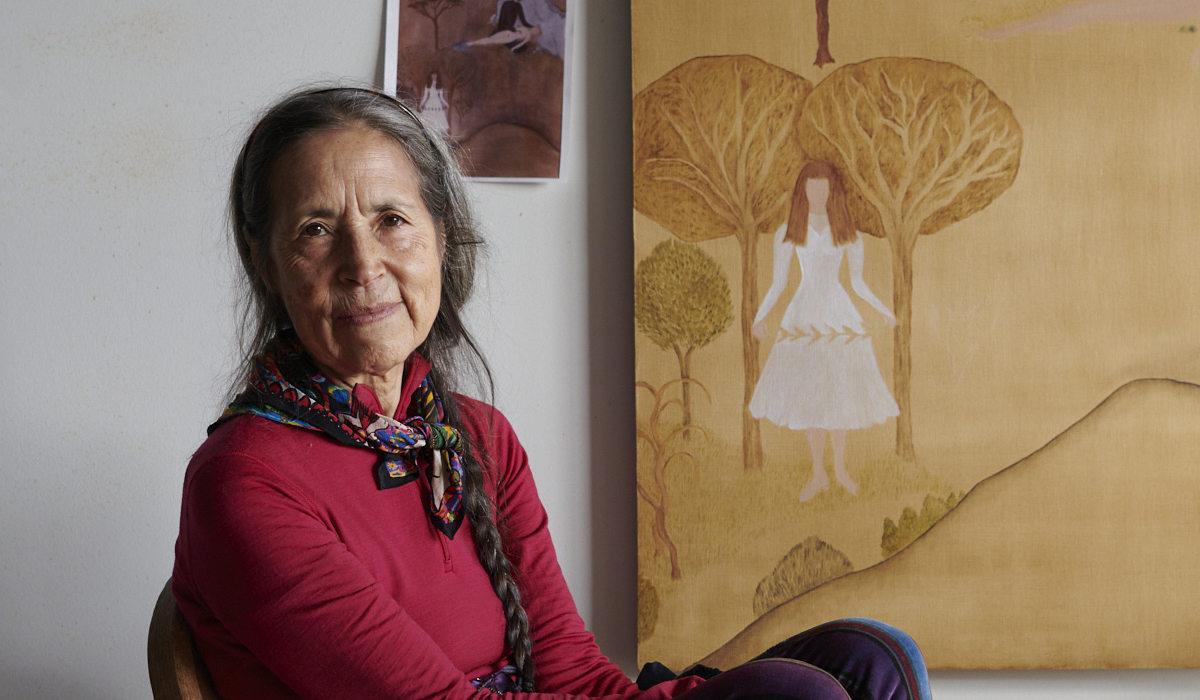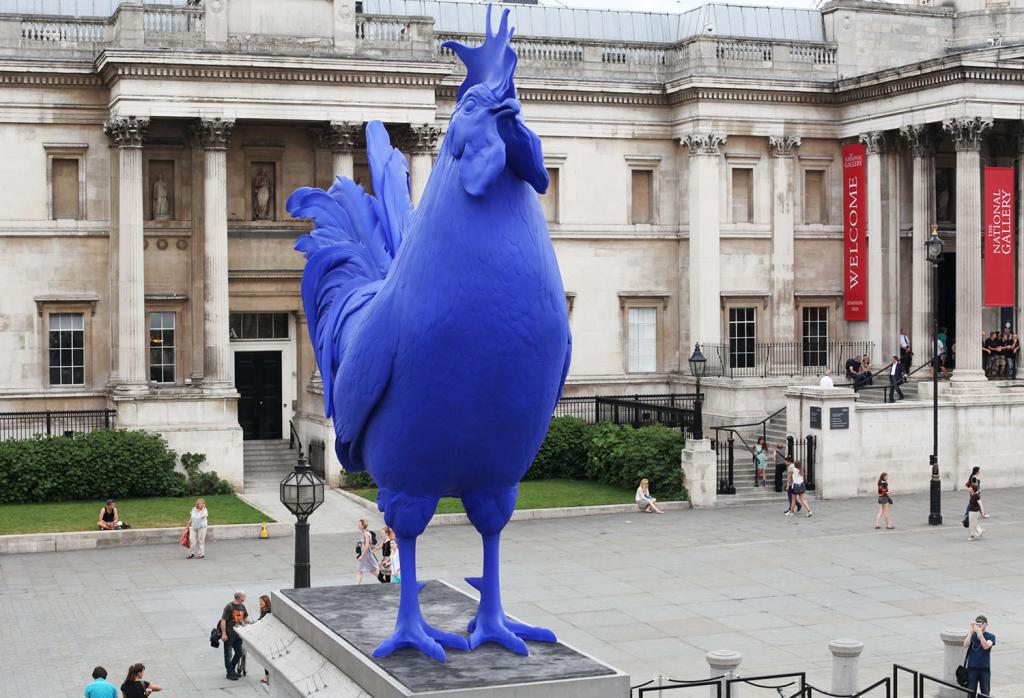
Katharina Fritsch and Cecilia Vicuña will receive Golden Lions for Lifetime Achievement at the Venice Biennale in April. The prizes are on the recommendation of the biennial’s curator, Cecilia Alemani.
Fritsch is a German artist best known for bright monochromatic large-scale sculptures of everyday animals and objects, which she says should instead be seen as three-dimensional pictures. In the past these statue-like works have included saints, mice, architectural models and plans, shells, snakes, umbrellas, human figures, the human brain, skulls, and, as was the case for her 2013 commission for the Fourth Plinth in London’s Trafalgar Square, a cockerel rendered in royal blue.
Typically, each work is first hand-molded, cast and re-worked, then cast again in a chosen material, and finally finished with a matte paint. Alemani recalled that she first encountered Fritsch’s work at the first Venice she ever attended, the 1999 edition curated by Harald Szeemann. ‘The massive piece filling the main room at the Central Pavilion was titled Rattenkönig, the Rat King, a disquieting sculpture in which a group of giant rodents is crouched in a circle with their tails knotted together, like some strange magic ritual. Every time I’ve encountered one of Fritsch’s sculptures in the years since, I’ve felt the same sense of awe and dizzying attraction. Fritsch’s contribution to the field of contemporary art, especially sculpture, has been incomparable.’

Vicuña is a poet, artist, filmmaker and activist whose work is steeped in questions of ecology, indigenous stewardship and anti-colonial struggle: in 2019 Lucy Mercer for ArtReview summed this up as ‘erotic socialism’. A work might often be intimated as a poem but go on to take the form of a sculpture and or land intervention, a performance or a film. Born in Santiago she went into exile after the CIA-backed military coup against President Salvador Allende. ‘For us, the young, that meant unhappiness and sorrow, so our movement was a rebellion against pain and abuse, an explosion of desire, a thirst for love, joy and justice.’
She coined the term Arte Precario, to refer to her work, a reference to both their physical state as well as subject matter. Alemani said of Vicuña, ‘Her artistic language is built around a deep fascination with Indigenous traditions and non-Western epistemologies. For decades, Vicuña has travelled her own path, doggedly, humbly, and meticulously, anticipating many recent ecological and feminist debates and envisioning new personal and collective mythologies. Many of her installations are made with found objects or scrap materials, woven into delicate compositions where microscopic and monumental seem to find a fragile equilibrium: a precarious art that is both intimate and powerful.’
Vicuña described the award as a honour, adding: ‘I believe our art and consciousness can play a role in the urgent need to move away from violence and destruction, to save our environment from impeding collapse… we badly need to find a new way of being in this Earth.’
The biennial, titled The Milk of Dreams, will open 23 April.